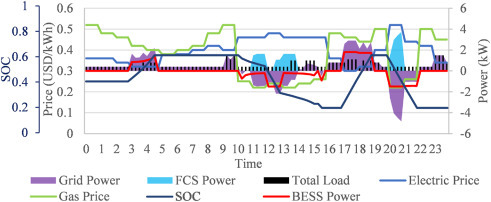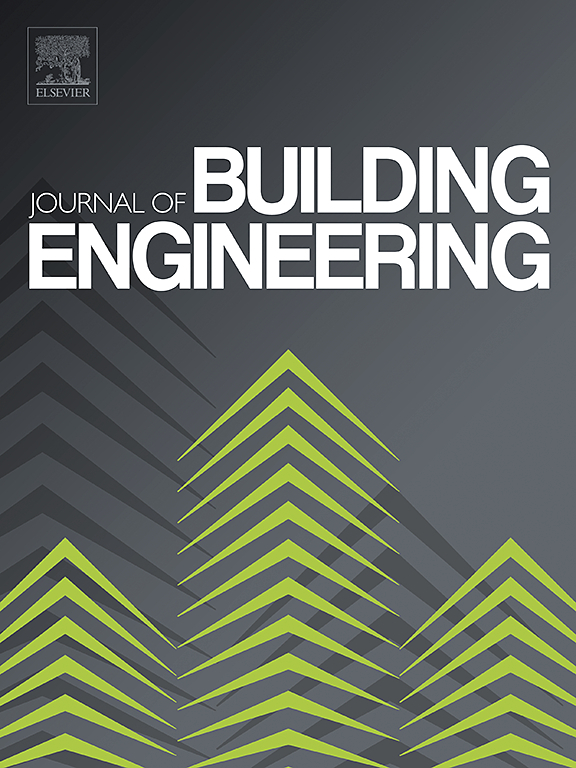Home energy management system for residential fuel cell-based combined heat and power system
This MILP-based optimization method enhances energy scheduling in residential FC-CHPS. It minimizes costs related to electricity, gas, and device degradation. The method matches nonlinear accuracy but reduces computing time by 99.94%. It adapts to both PEM and solid-oxide fuel cell types and integrates renewables. Ideal for smart, sustainable homes aiming for efficient and reliable energy use.

Fig. 13. Results of optimal electric power dispatch obtained using the optimization scheme proposed in Ref.
Technology Overview
Energy management system for residential fuel cell-based combined heat and power. Minimizing energy cost while preserving the lifespan of fuel cell and battery. The nonlinearity in fuel cell is approximated using piecewise linearization. Nonlinearity brought about by the fuel cell and battery lifespan is linearized. Employing mixed integer linear programming to solve the energy management problem.
Applications & Benefits
The proposed MILP-based optimization scheme significantly enhances the operational efficiency and cost-effectiveness of residential fuel cell-based combined heat and power systems (FC-CHPS). It minimizes electricity, gas, and degradation costs of both the fuel cell system (FCS) and battery energy storage system (BESS), making it highly suitable for long-term residential energy management. Compared to traditional MINLP methods, the scheme delivers equally accurate results while reducing computation time by 99.94%, enabling near real-time control. It is also adaptable to systems with renewable energy sources and various fuel cell technologies, including solid oxide fuel cells. This flexibility makes it valuable for sustainable smart homes and low-emission urban energy systems.
Abstract:
The goal of this paper is to propose an optimization scheme for enhancing power dispatch and load scheduling for residential fuel cell-based combined heat and power systems (FC-CHPS) using mixed integer linear programming (MILP), considering the lifetime degradation of both the fuel cell system (FCS) and battery energy storage systems (BESS). The scheme is applied in the home energy management system that oversees the electric and thermal power of residential FC-CHPS. First, the nonlinearity in the relationship between the natural gas consumption and output electric power, and between the residual thermal power and output electric power of the fuel cell system (FCS) in the FC-CHPS is approximated using piecewise linearization. Then, the piecewise linearization is integrated with MILP to derive optimal power dispatch and load scheduling solutions, while accounting for the nonlinearity of the FCS. Next, cost functions representing the lifetime degradation of FCS and BESS are formulated. These cost functions result in nonlinear optimization constraints. Therefore, innovative methods are proposed to linearize these constraints, allowing the continued use of MILP as the optimization method and factoring in the lifetime degradation of FCS and BESS. Compared to the mixed-integer non-linear programming (MINLP) method that does not linearize the non-linearity in the FCS or the lifetime degradation of the FCS and BESS, the proposed MILP scheme achieves the identical objective function value. Furthermore, the computation time for the proposed MILP scheme is 99.94 % lower than that required by the MINLP method. The proposed scheme provides accurate results in short computation times.

Home energy management system for residential fuel cell-based combined heat and power system
Author:J.C. Teo, Leeh-Ter Yao
Year:2024
Source publication:Journal of Building Engineering, Volume 98, 1 December 2024
Subfield Highest percentage:99% Architecture #2 / 203
https://www.sciencedirect.com/science/article/pii/S2352710224027001
